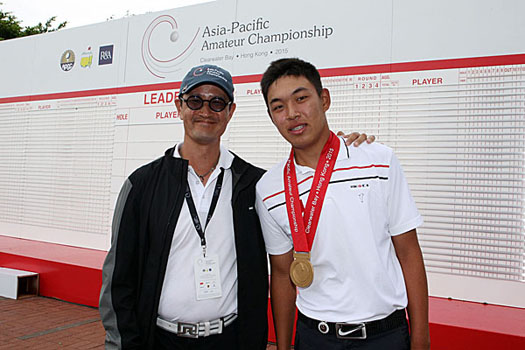
Q: We’re here with referee Roy Lee at the AAC. Roy, I believe you saw more on-course action than most of us during the week. How has the tournament been for you?
It’s my second AAC and the experience was wonderful. It is very well run and is on par if not better than any professional tournament. We have a core team of referees from around the region working for the AAC and we get to see each other every year, kind of like a reunion. This year is especially memorable as it is held in Hong Kong. It’s amazing to see these young talented players up close.
Q: Looking at the scorecards throughout the week. A lot of the players bogeyed or more the par-4 17th, would you say that’s the most challenging hole in the course?
The 17th is certainly one of the harder holes on the course. Along with the 3rd hole, they are the most exposed to the elements, and with the winds having picked up significantly due to the typhoon, these holes are playing much tougher.
Q: We are two weeks away from the UBS Hong Kong Open, and we are sure to see you refereeing at Fanling. Which hole would you expect to have the most ruling queries?
Yes, this will be my 5th year refereeing at the Hong Kong Open and every year, we prepare for all the trouble spots on the Composite Course at Fanling. There is no particular hole where we expect the most rulings, but there is the TIO (Temporary Immovable Obstruction) behind the 15th tee that is an interesting one from a rules perspective and can come into play on the approach shot to 14. We review it year in and year out and we only had it come into play once. That was last year and I was fortunate to take that ruling, to the envy of my other fellow referees.
The Composite Course is not long, but the tree lined fairways calls for precision and not necessarily length. Fortunately, we will not have the strong winds that we experienced this week at Clearwater Bay.

